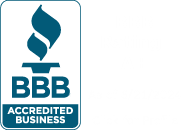Nonprofit organizations often encounter struggles with the intricacies of 501(c)(3) financial reporting. Ensuring transparency and compliance is critical for organizations, not only to maintain their tax-exempt status but also to build trust with donors and stakeholders. Here’s a comprehensive guide to help navigate the complexities of 501(c)(3) financial reporting.
Understanding 501(c)(3) Financial Reporting Requirements
501(c)(3) organizations are required to adhere to specific financial reporting standards set by the Internal Revenue Service (IRS). The primary document these nonprofits must file annually is the Form 990, which provides a comprehensive overview of the organization’s finances, including income, expenditures, assets, and liabilities. This form is essential for maintaining transparency and accountability.
Key Components to prepare Financial Reporting
1. Revenue and Expenses: This is a key part of financial reporting. Organizations must report all revenue streams and expenditures for the year. This includes contributions, grants, program service revenue, and investment income, alongside salaries, benefits, and other operational costs.
2. Balance Sheet: The balance sheet provides a snapshot of the organization’s financial health at the end of the fiscal year. This includes assets, liabilities, and net assets of the organization.
3. Public Support Test: Demonstrates that the organization receives substantial support from the public, a requirement for maintaining 501(c)(3) status.
4. Governance and Management: Information about the organization’s governance structure, including the board of directors, management policies, and procedures.
Best Practices for Accurate Reporting
1. Implement Robust Financial Management Systems: Use accounting software designed for nonprofits to track income and expenses accurately. This ensures that all financial data is readily available and can be easily audited.
2. Regular Financial Audits: Every organization should conduct internal audits periodically and external audits annually. This helps in identifying discrepancies early and ensures that financial records are accurate and compliant.
3. Detailed Record-Keeping: Organizations must maintain meticulous records of all financial transactions. This includes receipts, invoices, bank statements, and grant agreements. Proper documentation is crucial for substantiating the information reported on Form 990.
4. Board Oversight: Ensure that the board of directors is actively involved in financial oversight. Regular financial reviews during board meetings help in maintaining transparency and accountability.
Conclusion
Effective financial reporting for 501(c)(3) organizations is more than a compliance requirement; it is a critical component of building trust and demonstrating accountability to stakeholders. By implementing best practices and maintaining rigorous oversight, nonprofits can navigate the complexities of financial reporting and focus on their mission-driven work.
As consultants, BryteBridge is here to guide and support you through navigating the 501(c)(3) financial reporting process, ensuring you have the tools and knowledge needed to thrive financially. For more information, join our BryteBridge Academy for our Financial Reporting 101 bootcamp.



